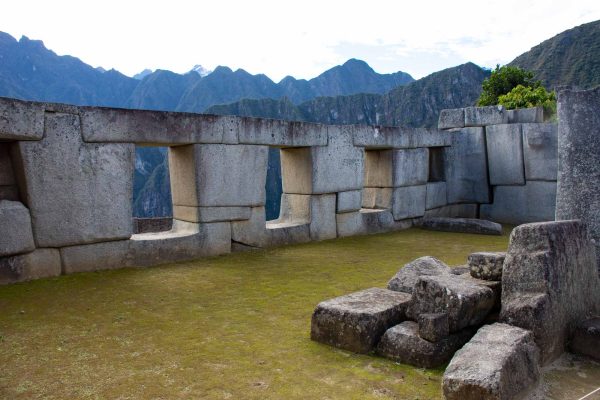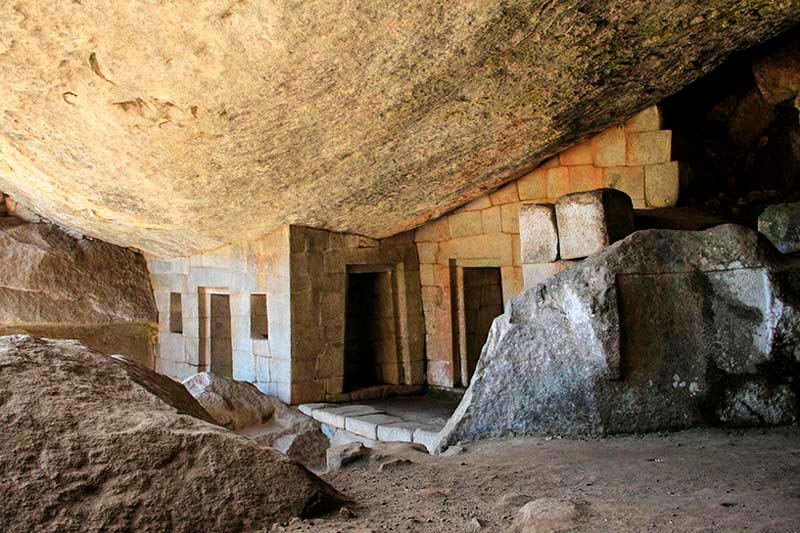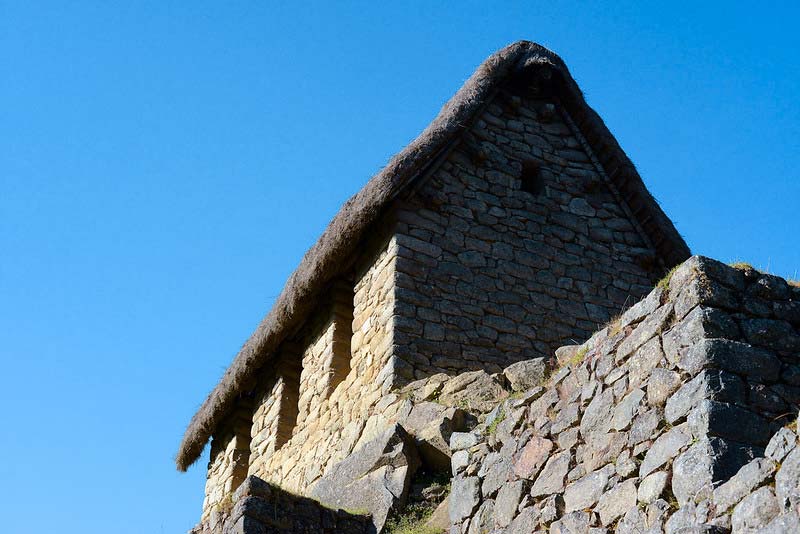Hello! Click on one of our members below to chat on Whatsapp
The Majestic Citadel of Machu Picchu was rediscovered in 1911 by Yale University history lecturer Hiram Bingham. He incorrectly named it ´The Lost City of the Incas´, because the people that still lived up in the Andes mountains were fully aware of its existence. It’s a massive and enigmatic city, one of the 7 Wonders of The World and a UNESCO World Heritage Site.
The brilliance, genius and precision of Incan engineering and construction is astonishing. The structures that remain give you a glimpse into the lives of the ancient Incas who once called this place home. Read about the different structures you get to visit on your exploration of Machu Picchu. Each site peels a layer into the historical, cultural and religious legacy of the vast Empire of the Incas.

It is an imposing site at 10 meters long and 4 meters wide. Its construction is immaculate, proving the value and importance placed on it by the Incas. It’s located at the Sacred Plaza in the Main Urban Section of Machu Picchu. It once had five windows, but now only three of them remain. Each window is said to represent something: First one represents the Underground (Uku-Pacha), the second is the Heavens (Hanan-Pacha) and the final one is The Present (Kay- Pacha). There are different theories as to the history of this structure, the version of the Spanish Conquerors and Folklore, both versions are contradictory.

The peak of Huayna Picchu rises over Machu Picchu, where the Urubamba River gently coils around it. It is at an elevation of 2 693m/8 835ft. The mountain is home to the breathtaking Temple of the Moon and adjacent to it is the Great Cavern made of fine masonry. The high priest and local virgins resided here. Its visitors are limited to 400 a day, during the only 2 time slots available each day. The hike is steep, with exposed sections on the pathway leading to the summit. It can get slippery, however certain section do offer steel cable for support. The view at the top gives you the most panoramic and spectacular views of Machu Picchu. Majority of the stunning pictures you find on postcards and social media are taken at the top of Huayna Picchu.

The Sun Gate (2,720m/8,924ft), also known as Intu Punku, is perched on the hilltop overlooking the Great Citadel of Machu Picchu, located on one side of Machu Picchu Mountain. It is the first viewpoint of Machu Picchu. The Incas used it as a kind of control gate for the people entering and leaving the Inca City of Machu Picchu. Because of its remote and strategic location, it is believed that Machu Picchu only welcomed elite guests from the empire. It is a large place, with windows and doors supported by terraces. From the Sun Gate you can see the entire City of Incas and the size and majesty of it simply takes your breath away.

Intuhuatana is a large imposing stone carved directly into the bedrock of the mountain´s summit where Machu Picchu lier. The Incas believed the stone held the sun in its place along its annual path in the sky. The Spanish destroyed other Intuhuatana because they feared it would create a political liability due to its religious significance. Even as it stands today, it still feels like the stone radiates energy.

The temple of the sun is located in the religious sector in the Citadel of Machu Picchu. It is made of granite, inside is a natural cave that could have been a grave or mausoleum. There is a possibility that Pachacutec was buried here, he is the Inca Emperor that ordered the construction of Machu Picchu. Its shape is circular, which is very unusual in Inca Construction.
The Temple played a vital role in religious practices. It is said to have been used to worship the sun by paying tribute and making offerings to the sun. It was an astronomical observatory to determine the arrival of the summer and winter solstice, as well as the change of seasons. In the center is an altar carved in rock for religious ceremonies. This sacred Temple of the Inca, is a holy place that radiates spiritually and divinity.

Temple of the Moon can be found at 390m/1280ft below the summit of Huayna Picchu. It is made of masonry stone, has an open face and a small cave opening. In the center is a throne carved out of rock, next to it are steps that descend deep into the cave.
This stone is said to hold mummies. The stone work depicts the 3 plains of Inca religion. Firstly, we find The Hunan Pacha (the heavens) represented by the great Condor, followed by The Kay Pacha (the earth or physical life) represented by the formidable Puma Cat and finally we get The Ukju Pacha (the underground) seen in a form of a snake. According to some travel guides, the temple has 6 levels built on top of each other over its 200-year span. There are many theories regarding its use.
Some say it was used for the worship of Gods. While others concur that it was a royal tomb, place of worship and a look-out post. Another interesting theory is that it was sacrificial ground or it could also have been a ceremonial bathing complex. Whatever it was used for, it played a very important part in the life of the ancient Incas.
The trail from the summit of Huayna Picchu to the Temple is very hazardous and not suitable for people with vertigo or acrophobia.

The Inka Bridge is located on the western part of Machu Picchu. The hike takes about 30 minutes one way. It sits at an elevation of 2450m/8 038ft and is an easy hike. The bridge is made of wooden logs balanced by two stone walls. The path is made of stone, however at this particular point the Incas left a 20-foot gap, presumably to keep outsiders and enemies out. The foot drop is a staggering 1900 feet. If anyone fell from here, death was guaranteed. No one has actually fallen in recent history. This was a secret entrance for the Inca Army into Machu Picchu, so the need to keep other people out makes sense.
The Incas were known for constructing many different bridges, this one in particular is a common bridge found in the Andes Mountains, the log and stick bridge. As time has progressed the Inca bridge has deteriorated and for safety reasons, hikers are no longer permitted to cross the bridge.

As the name states, it was an out building used by the guards to watch the two main entrances into Machu Picchu, also referred to as the Caretakers Hut. The two entrances include the Sun Gate in the South and end of the Vilcabamba Trail in the west. Modern ¨House of the Guardians¨ gives you the opportunity to take those famous postcard perfect pictures of the Great Machu Picchu. After hiking the Inca Trail, the grounds around the building, a great place to stretch your legs, enjoy the llamas and alpacas grazing lazily and just relax a bit before exploring the Majestic Machu Picchu.

The most fascinating thing about Ancient Incas is their belief in the sacred relationship between men and nature. They made sacrifices, like throwing coca leaves on the ground in order to communicate with the Gods of the Mountains (UPUS) among others. The sacred rock is a large rock, that stands at 3 meters high and 7 meters wide.
Although opinions differ on its shape, everyone seems to agree that there are similarities between its shape and the mountain peak behind it in the distance. Its location in the ceremonial space, exactly on the northern part of the city and at the center of the two Huayranas, supports the idea this stone was used for worship. People that have touched the stone when it was still allowed, state that they felt the energy and spirit of Upus radiating from the rock. It is a very popular structure and is positioned near the entrance to Huayna Picchu.
Machu Picchu is one of the worlds´ most popular tourist destinations. To preserve this site, the Peruvian government has introduced a number of regulations. In order to have an uninterrupted and enjoyable life experience, you need to be aware of the following.